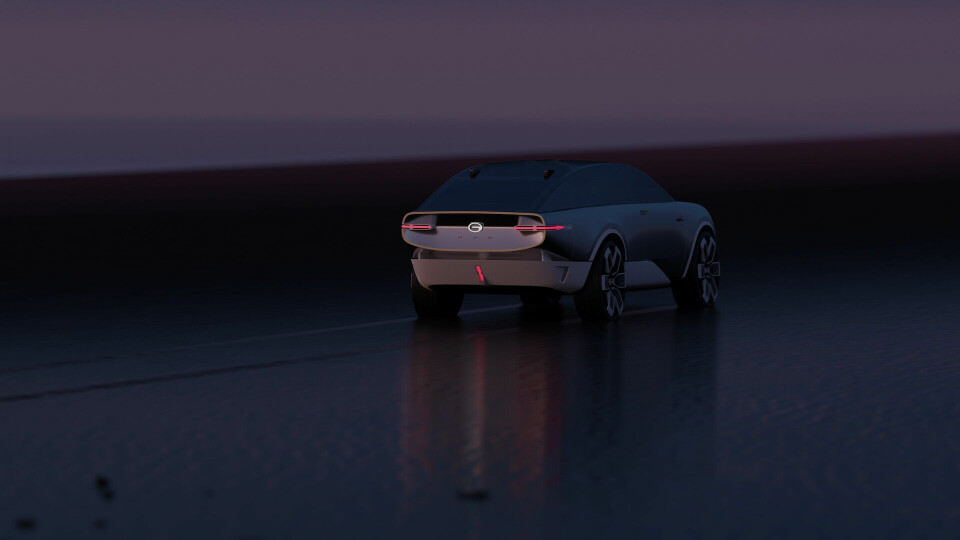
China, Italy and US teams collaborate on new GAC concept
Car Design News chats to GAC design boss Fan Zhang about the brand’s latest concept car, the ERA. Beyond that striking exterior, it is an example of how different teams can work together on a global stage
GAC has become quite the proponent for show cars and in recent years has trotted out multiple concepts across various vehicle segments. From minivans and sportscars, the design teams in China, Europe and the US are clearly an active bunch.
Its latest project, the ERA, is a result of a collaboration between those in Guangzhou, Los Angeles and Milan – and the car itself is a reflection of this, designed for a global audience. Described as a full-size all-wheel drive crossover SUV, the ERA features a dramatic, almost ’boat-tail’ rear end and stocky features. Like the Space concept, this is also an example of how hydrogen powertrains could be utilised. In theory, the 200kw motors located on the rear axle would offer around 540 horsepower and 800km of electric range.
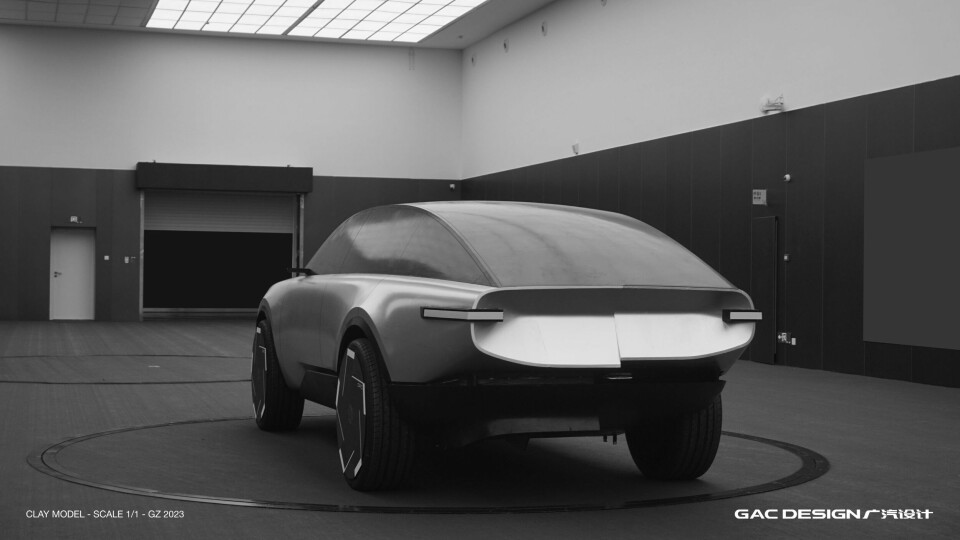
Pontus Fontaeus, director of the Advanced Design Los Angeles studio, notes that “despite challenges like time, distance and communication,” the ERA reflects how projects like this can be done effectively across multiple continents. Commenting on the car itself, Stéphane Janin, director of GAC Advanced Design Milan, describes it as ”both powerful and elegantly simple, harmonizing with the emerging era of clean technology and energy.”
To learn more about the ERA, Car Design News caught up with global head of design, Fan Zhang,
What is the idea behind the concept?
The ERA concept is more than just a vehicle; it’s a bold statement about the future of mobility, a symbol of GAC’s ambition to be a leader in automotive innovation, showcasing what’s possible when cutting-edge technology meets sophisticated design.
How did the design process work in reality? Were teams working in parallel across China, Italy and the US or was it more linear process?
Our design process was collaborative across teams in China, Italy, and the US, each bringing unique perspectives and expertise. Through this cross-continental collaboration we funnelled diverse ideas into a cohesive and innovative design, working together to harmonise different cultural insights to create something truly global.
How integral was technology to the process? Was there a need for physical models, for example?
Our global design team works together intensively through digital tools, which significantly enhances our efficiency. With these tools, designers can easily modify and refine concepts, enabling rapid prototyping and immediate visual feedbacks. Despite the reliance on digital tools, the importance of physical models remains, especially during the verification phase. These models provide us with a tangible sense of the car’s proportions and aesthetics, ensuring a seamless transition of our digital designs into the tangible world.
How would you describe the overall aesthetic?
It’s a harmonious blend of strength and elegance. We aimed for a design that was assertive yet refined, reflecting the advanced nature of its technology. It’s a vehicle that stands out with its clean lines and sophisticated presence.
Yes, from the side profile it is a very clean design. Lower down though there are some aerodynamic features; how much did aero determine design decisions?
We wanted a balance between technical necessity and visual appeal
Aerodynamics played a crucial role in shaping the ERA. We meticulously designed every curve and line to enhance aerodynamic efficiency, balancing aesthetics with performance. The sleek side profile and the aerodynamic features at the lower part of the vehicle are testament to our commitment to a car that performs as brilliantly as it looks.
The face is understated – what were the main considerations from a technical standpoint? And how did you make them look good?
The understated front design was a deliberate choice. Aligning with the overall theme of the car, we wanted a balance between technical necessity and visual appeal. The integration of sensors and cameras into a full-width light band is not just aesthetically pleasing but also functional, serving to enhance visibility and heat dissipation.
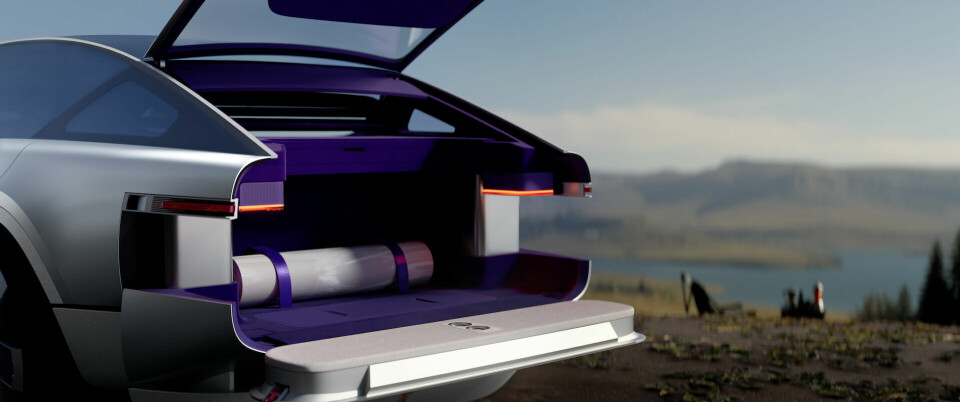
Moving on to the rear – tell us more about the functionality of the trunk. What was the thinking there?
The trunk’s design is a blend of functionality and innovation. We envisioned a space that’s not just for storage but also adaptable to different lifestyle needs. During travel breaks, the rear armrest unfolds into a tea table, allowing passengers to either recline or sit, engage in conversation, or simply enjoy the view. This versatility and sophistication is a core theme of the ERA concept.
How did you link the external aesthetic with the interior?
In contrast to the sleek and understated exterior, the interior is a deliberate fusion of organic and geometric aesthetics. It creates a warm and welcoming ambiance. By incorporating motifs that play on the concept of ‘opposites attract,’ we have crafted a unique sense of unity within the design. Drawing inspiration from the timeless styles of mid-century and the futuristic allure of the space age, our interior embraces the philosophy of ‘form follows emotion.’ This approach seamlessly marries the glamour and passion of the past, breathing life into a design that not only captures the essence of bygone eras but also serves as a testament to the beauty of tomorrow.
The onus seems to be on a multifaceted space that can be reconfigured. However, it is not overcomplicated when compared to similar concepts that seem to have multiple settings – everything from workspace to nightclub. Was it a conscious decision to keep things straightforward or did the idea emerge during the design process?
The interior of the ERA was designed with the user in mind, envisioning a space that serves as a welcoming haven for social interaction and reunions. With that in mind, we chose to focus on simplicity and versatility rather than overcomplication. Rooted in our human-centric design philosophy, we prioritise functionality and elegance, seeking to seamlessly integrate form and purpose. The outcome is a space that effortlessly adapts to diverse needs, offering a multitude of experiences without overwhelming the user.
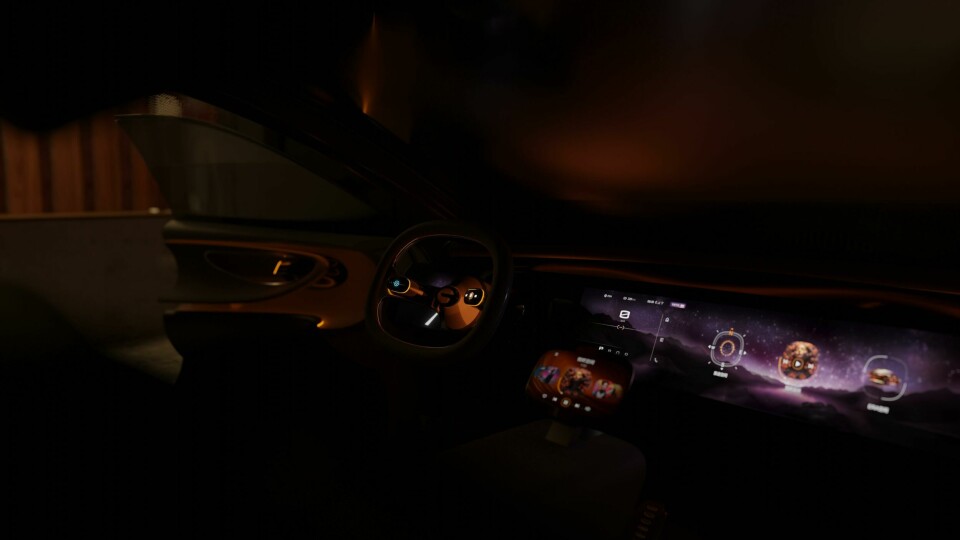
There looks to be quite an expansive screen, which suggests there is still an appetite for that kind of technology in China?
This was a strategic decision. We recognise the growing appetite for advanced technology and digital interfaces in China, a market known for its enthusiasm for tech innovation. As the car interior becomes more of a mobile living room, this screen is not just a feature; it encapsulates the pivotal role of connectivity and digital interaction in modern vehicles. Its significance lies not only in its size but in its seamless simplicity, consolidating a myriad of functions into a single, user-friendly interface.
The ERA concept is undoubtedly a stepping stone towards GAC’s future vehicle lineup
There are some interesting material choices such as marine recycled plastic and seaweed-based materials – how scalable are they?
Our choice of materials was driven by a commitment to sustainability. The scalability of these materials is a challenge we’re eager to tackle. We believe in pioneering materials that not only reduce environmental impact but also set new standards in sustainable manufacturing.
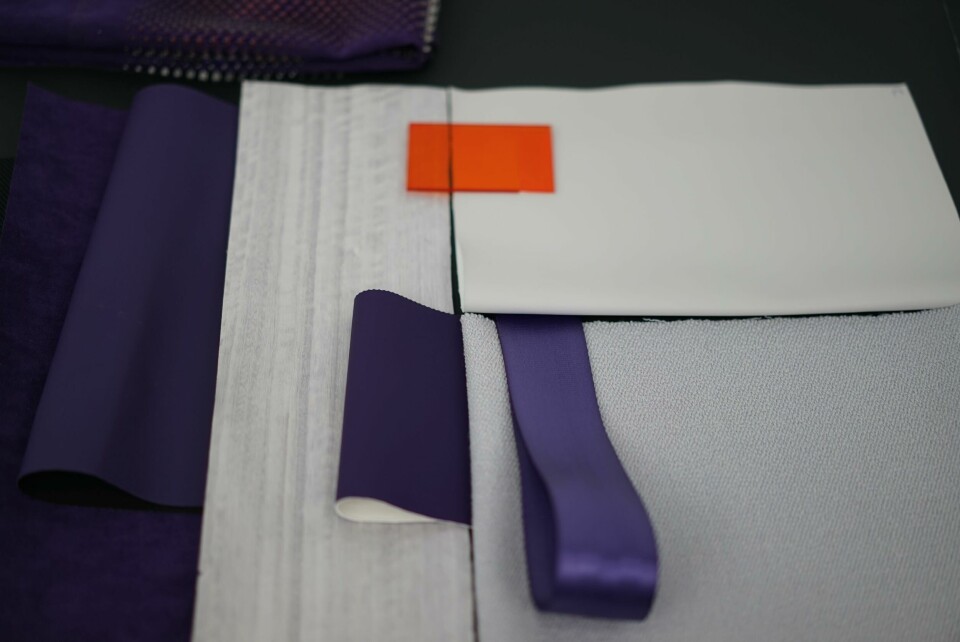
In terms of interior mood – how much did lighting play a role in setting the tone? And did you work with external suppliers to deliver on this?
Lighting played a pivotal role in setting the interior mood of the ERA Concept Car. We aimed to create an atmosphere that was both welcoming and futuristic, with a concept of experiencing the sunrise to the sunset. The lighting is strategically designed to accentuate the car’s curves and materials, creating a sense of luxury and comfort. It’s about more than visibility; it’s about creating an experience.
The design team in Guangzhou worked with the team in LA to develop the interior of the ERA, and led to the integration of cutting-edge lighting technologies, thoughtfully designed to adapt to a range of driving conditions and cater to individual preferences, enhancing the overall ambiance. To bring this vision to life, we partnered with leading external suppliers specialised in automotive lighting.
Why hydrogen, and how did the FCEV powertrain inform the design?
Choosing hydrogen was a deliberate move towards sustainable mobility. Hydrogen fuel cells offer a perfect blend of efficiency, range, and zero emissions. We wanted the ERA to be a beacon of environmental responsibility, demonstrating how advanced technology can lead to cleaner, more sustainable transportation solutions.
Integrating hydrogen fuel cells was both a challenge and an opportunity. This technology influenced the car’s architecture, allowing us to reimagine the layout and weight distribution. It opened new design avenues and offered opportunities for a sleek design while accommodating the necessary technology.
What next for the concept? Will it come to production?
While we can’t confirm a specific timeline for production, the ERA concept is undoubtedly a stepping stone towards GAC’s future vehicle lineup, serving as a blueprint for the future, it signals our commitment to sustainable, innovative, and aesthetically compelling vehicles. The goal is to bring as much of this visionary concept to reality, blending innovation with practicality.




















































